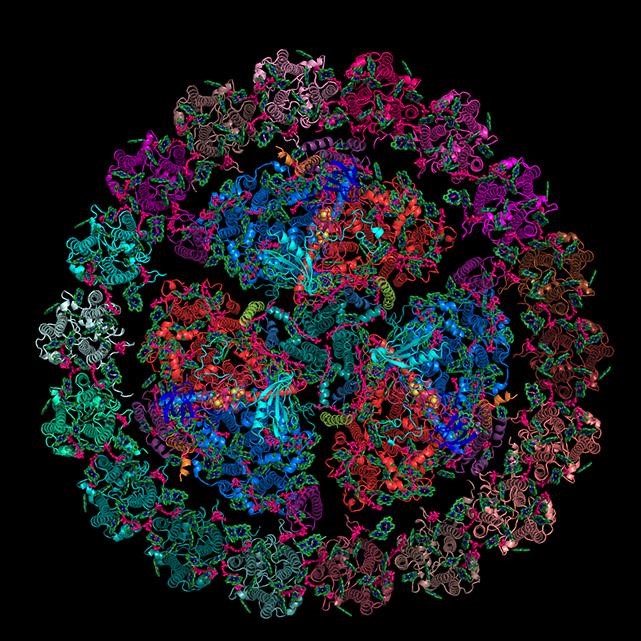Scientists from Arizona State University have determined the structure of a very large photosynthetic supercomplex, PSI-IsiA complex, a common form of photosystem I, one of the two essential engines of photosynthesis.
The complex is unique in size, the largest photosynthetic supercomplex with a known molecular structure, and in complexity with more than 700 different molecules (mostly light-harvesting molecules) making up the complete structure. The scientists also found that there are 591 chlorophylls in the PSI-IsiA supercomplex, by far the largest number of bound pigments in any of the photosynthetic supercomplexes with known structures.
This supercomplex is produced by a cyanobacterium under low iron environment or excessive light fluxes in the lab. The ability of the cyanobacterium to express this complex while under stress plays an important role in their survival under such conditions.
(Source: Crop Biotech Update, International Service for Acquisition of Agri-Biotech Applications. www.isaaa.org)

Overall structure of the PSI-IsiA supercomplex.
Photo Credit: Arizona State University



